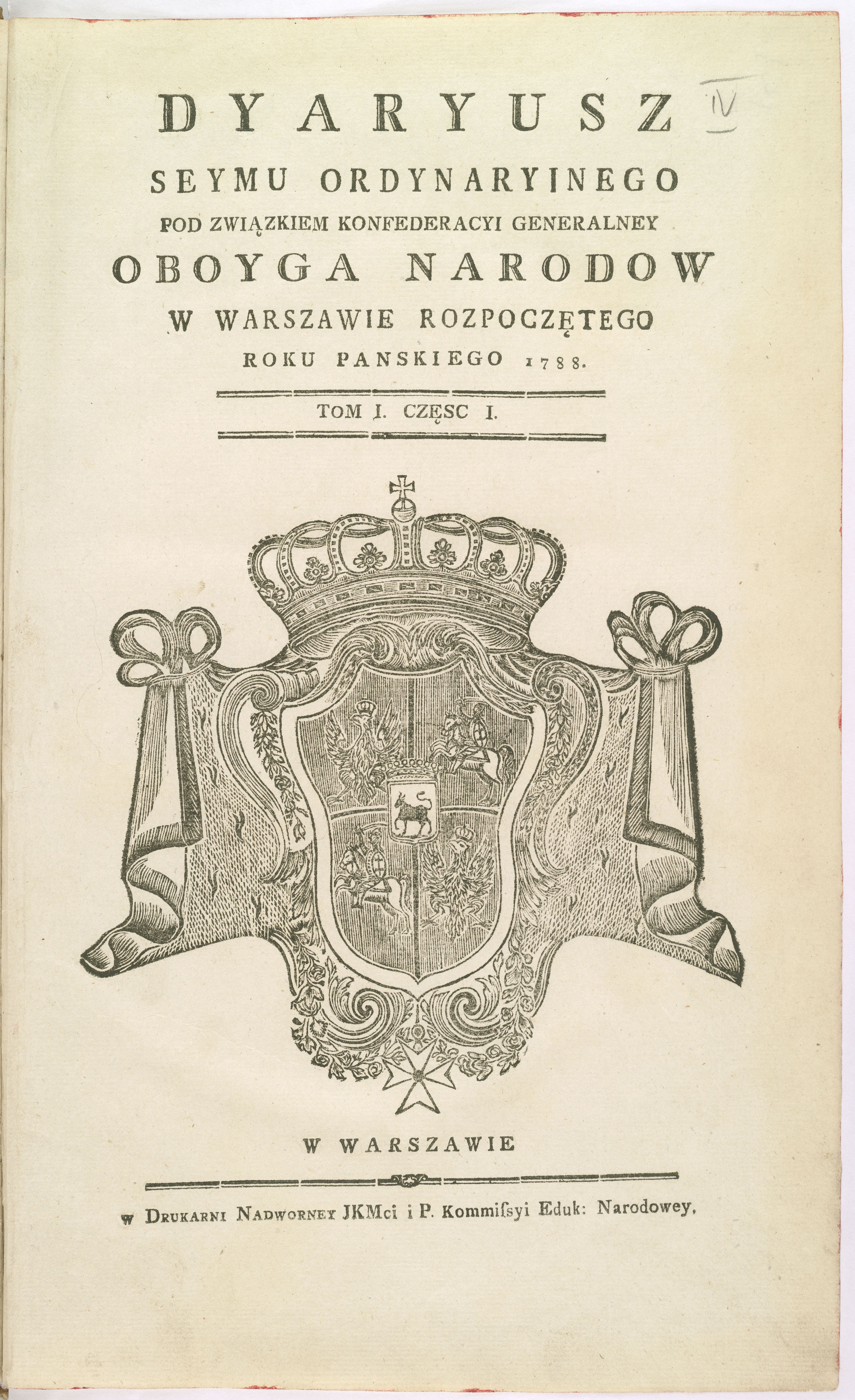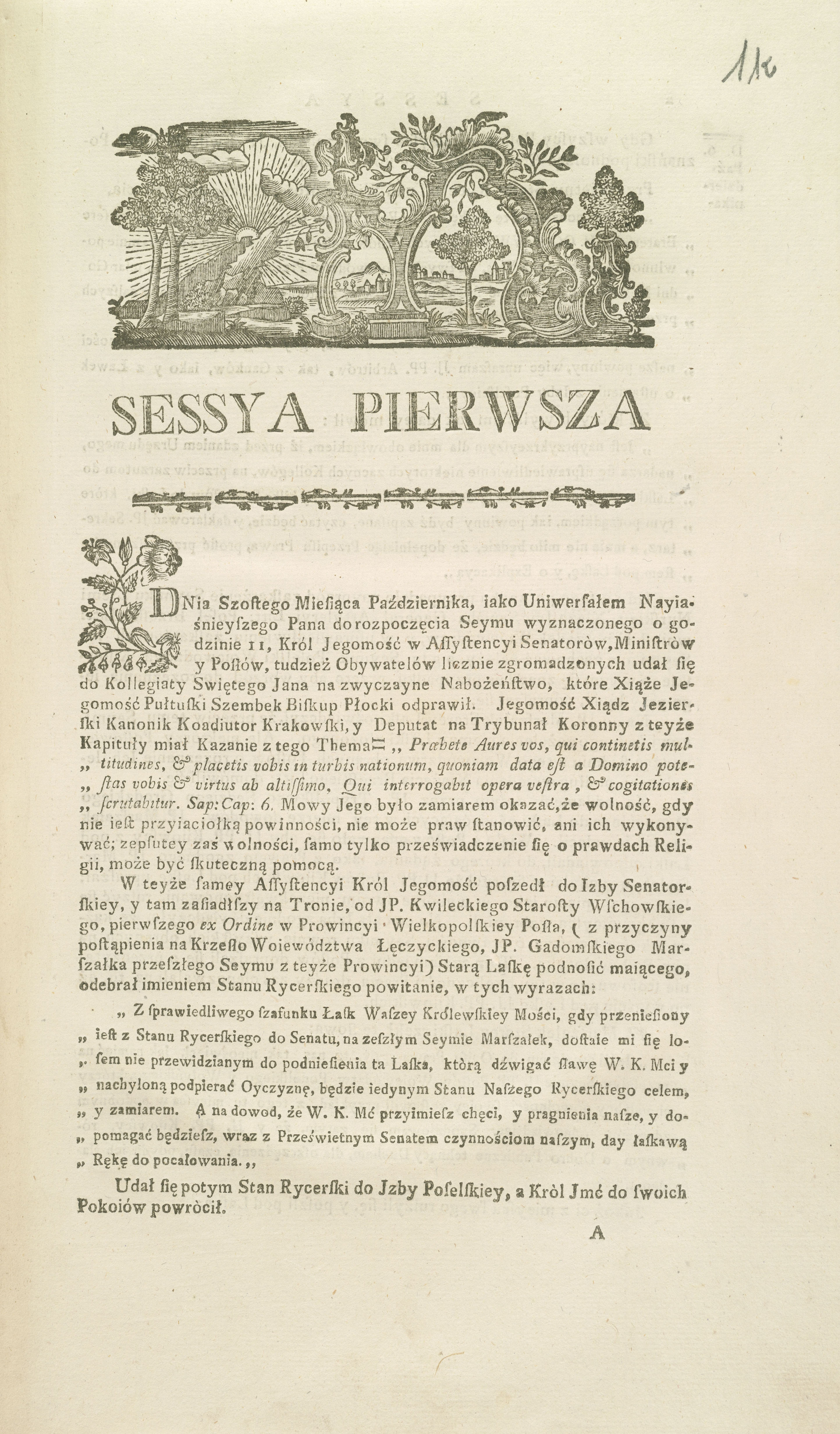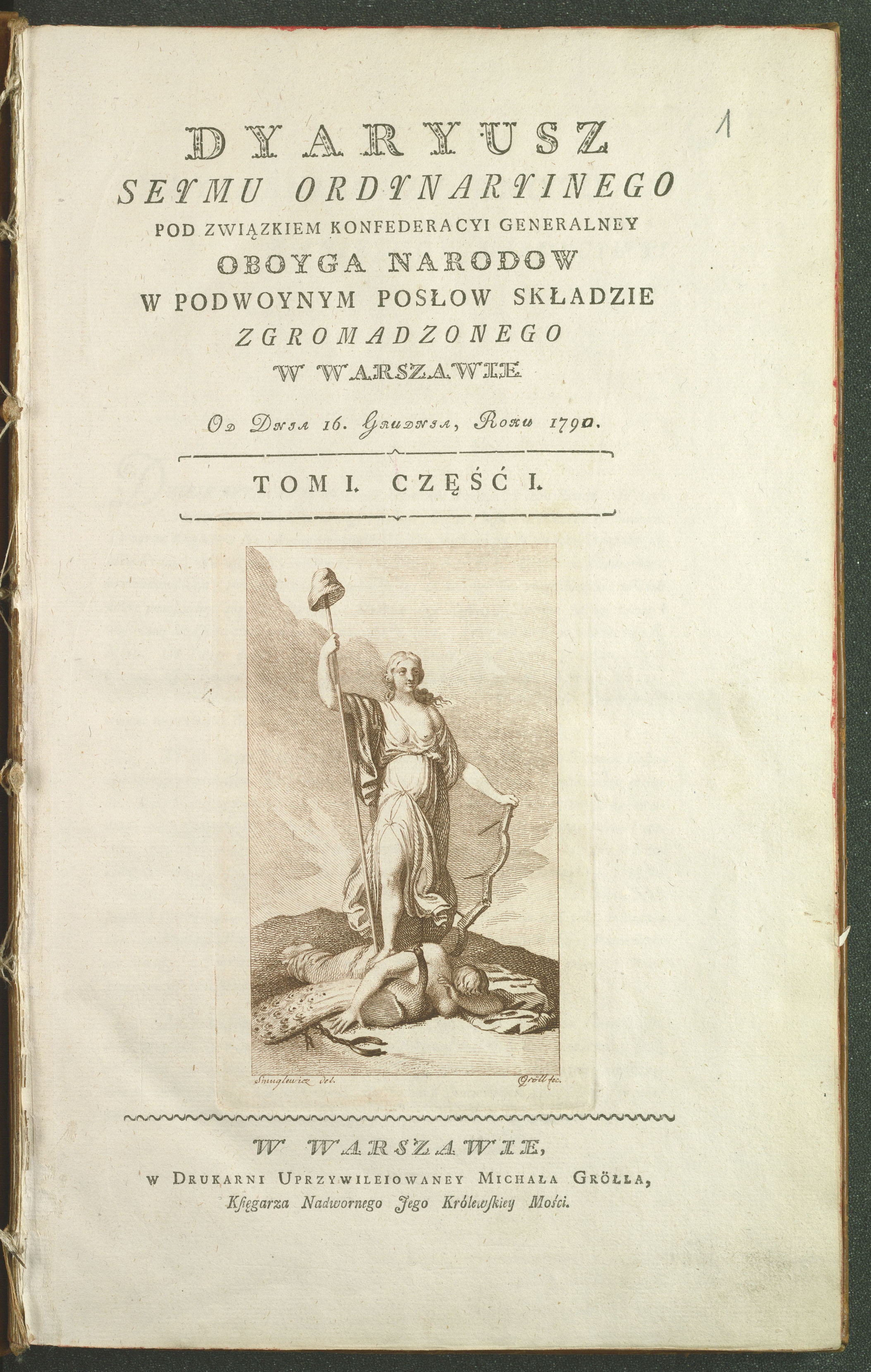THE SEJM (Parliament)
The Four-year Sejm (also known as The Great Sejm) was a parliamentary session of the Polish Commonwealth which sat from 6th October 1788 until 29th May 1792 in Warsaw. On the second day of deliberations a Sejm Confederation was formed. The Crown Referendary, Stanisław Małachowski, was appointed Marshal of Confederation of the Crown (the day before he had been chosen as Marshal of the Sejm), while Prince Kazimierz Nestor Sapieha, a General in the Lithuanian Artillery, was appointed Marshal of the Lithuanian Confederation. In accordance with the confederation act, the rule of liberum veto was not binding during the Sejm and decisions were taken either by acclamation or by majority voting.
The Sejm held 565 sessions, during which it passed around 500 laws. Around 530 senators and deputies took part in the deliberations, the majority of whom went on to take part in the Kościuszko Uprising, to fight in Dąbrowski ‘s Legions and to organise the Principality of Warsaw. From the outset of the deliberations, the Sejm was politically heated, saturated by a patriotic, anti-Russian and pro-reform atmosphere. In the early sittings, the Sejm focused on tearing up the existing political order established during the Partition Sejm of 1773-1775 which had been controlled by the Russian Ambassador, Otto Magnus Stackelberg. One of the first decisions of the Great Sejm was an act from 20th October 1788 on increasing the size of the army from 18,500 to 20,000. On 3rd November 1788 the Military Department of the Perpetual Council was abolished, followed by the Perpetual Council itself on 19th January 1789. Both were seen as instruments of Russian rule. Next, the Sejm began to build the foundations of the new political system. In early 1789, it increased taxation on royal lands, introduced income tax on landowners and the Church. In November 1789 it established a civilian-military committee for public order. On 29th March 1790 it entered a defensive alliance with Prussia. From 16th December 1790 the Sejm worked with double the number of deputies. On 3rd May 1791 it enacted the “Constitution Act”, known as the Constitution of 3rd May, in reference to its enactment date. This was the first constitution in Europe and the second in the world. It applied for around one year during which time it gained the support of the majority of the Polish nation. In the last year of the Great Sejm, work continued on legislation that developed the framework of the norms of the Constitution. Suspended on 29th May 1792, due to the outbreak of war with Russia, the Sejm was never to reconvene.
After the third partition of Poland (in 1795) and during the time of foreign occupation (partition), the Four-Year Sejm and the Constitution of 3rd May developed symbolic importance. Their commemoration played an important role in sustaining and inspiring the Polish national spirit and identity.
After regaining independence, during the period of the Second Polish Republic (1918-1939), 3rd May became the Polish National Day. On 6th April 1990, the Polish Sejm reinstated 3rd May as a day of national celebration. The idea of fulfilling the will of the nation from the times of the Four-Year Sejm also returned – the construction of a temple. In 2002, on Wilanów Fields in Warsaw, the construction of a sanctuary began; the Temple of Divine Providence.



